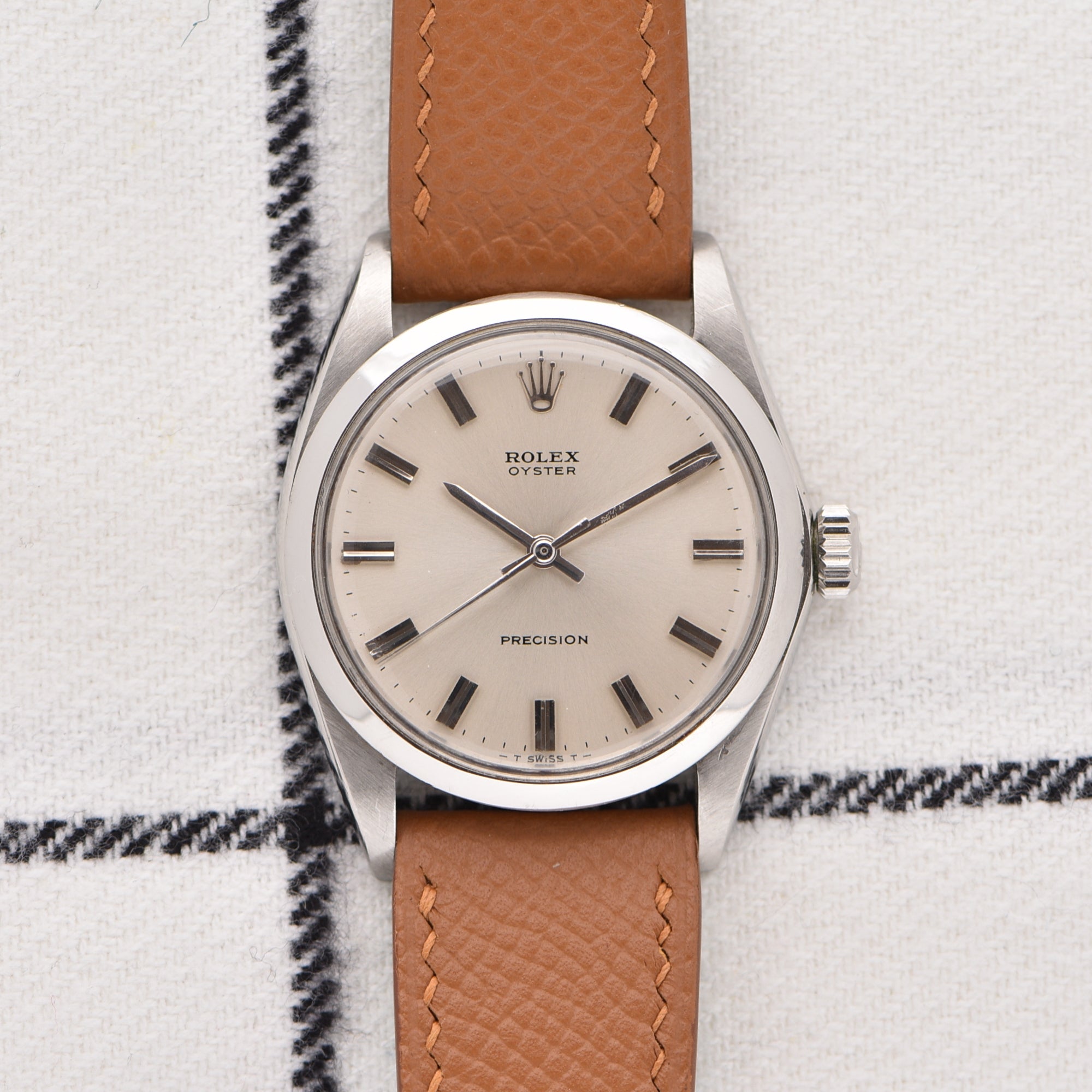
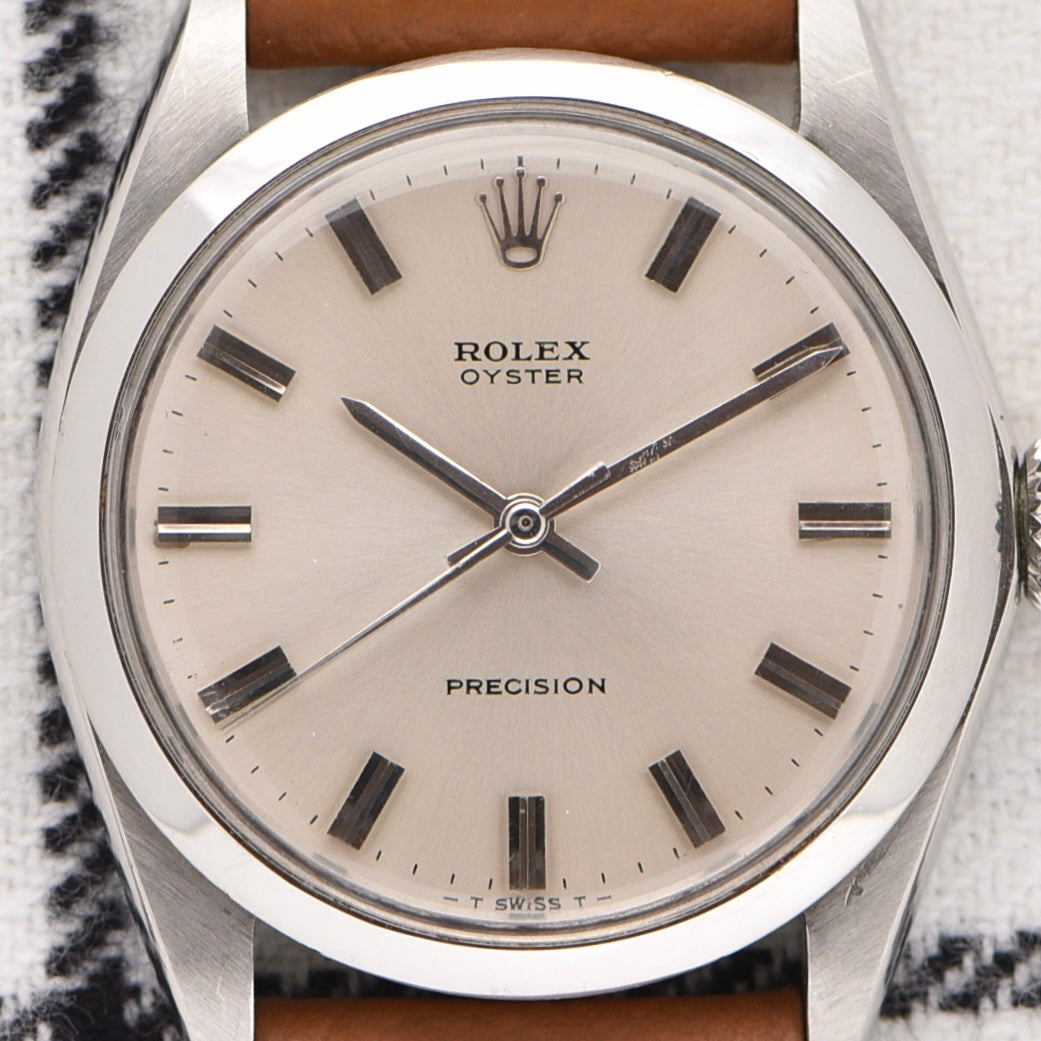
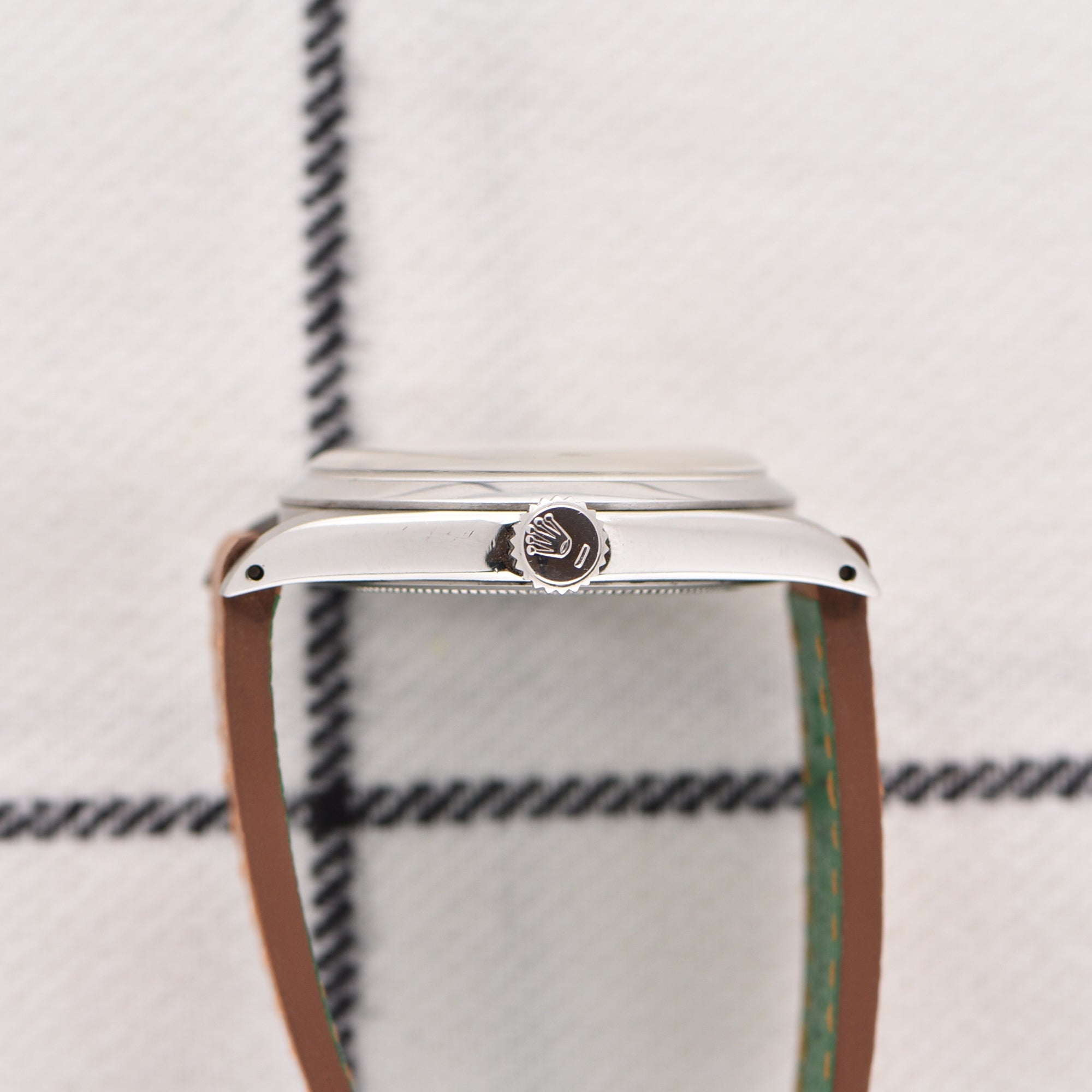
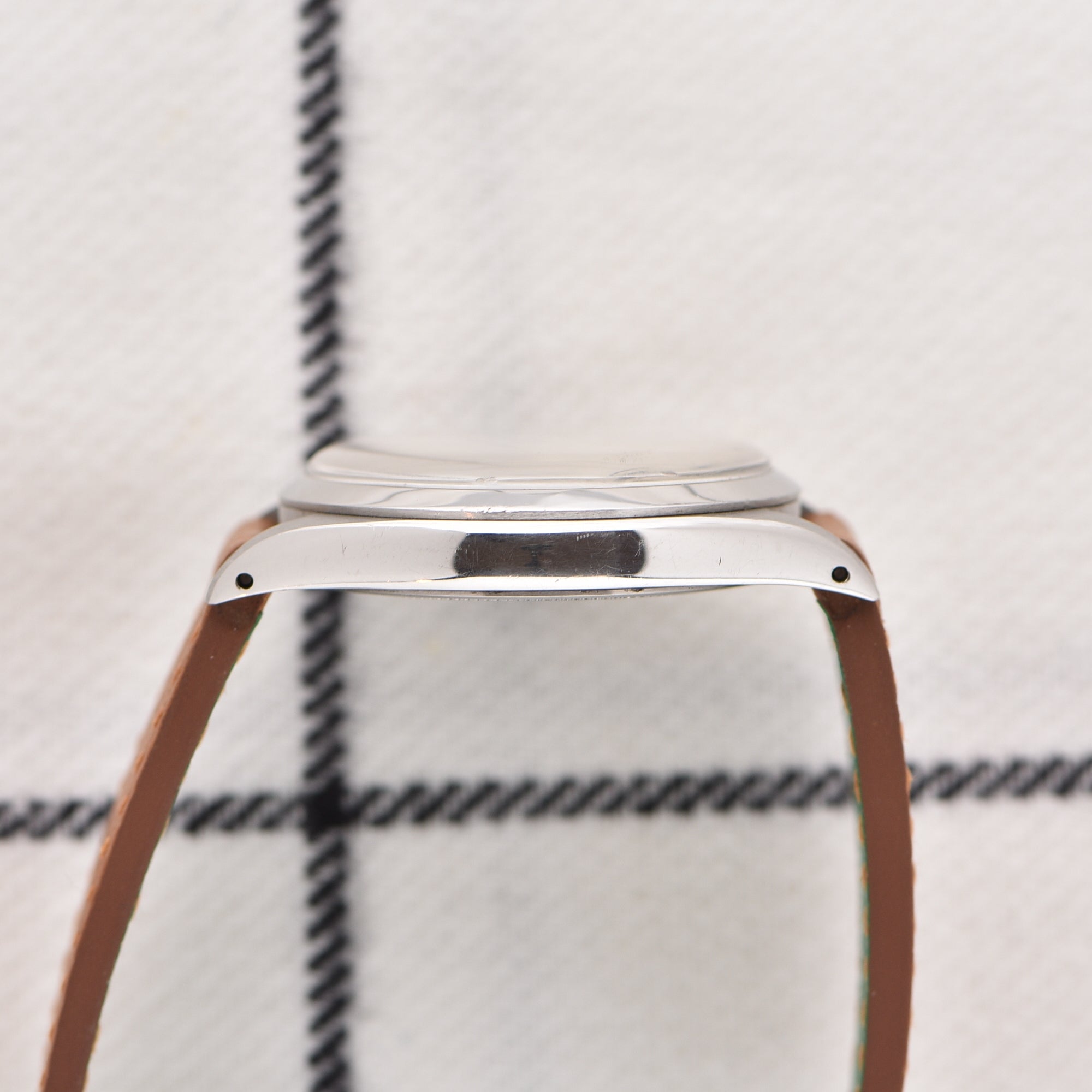
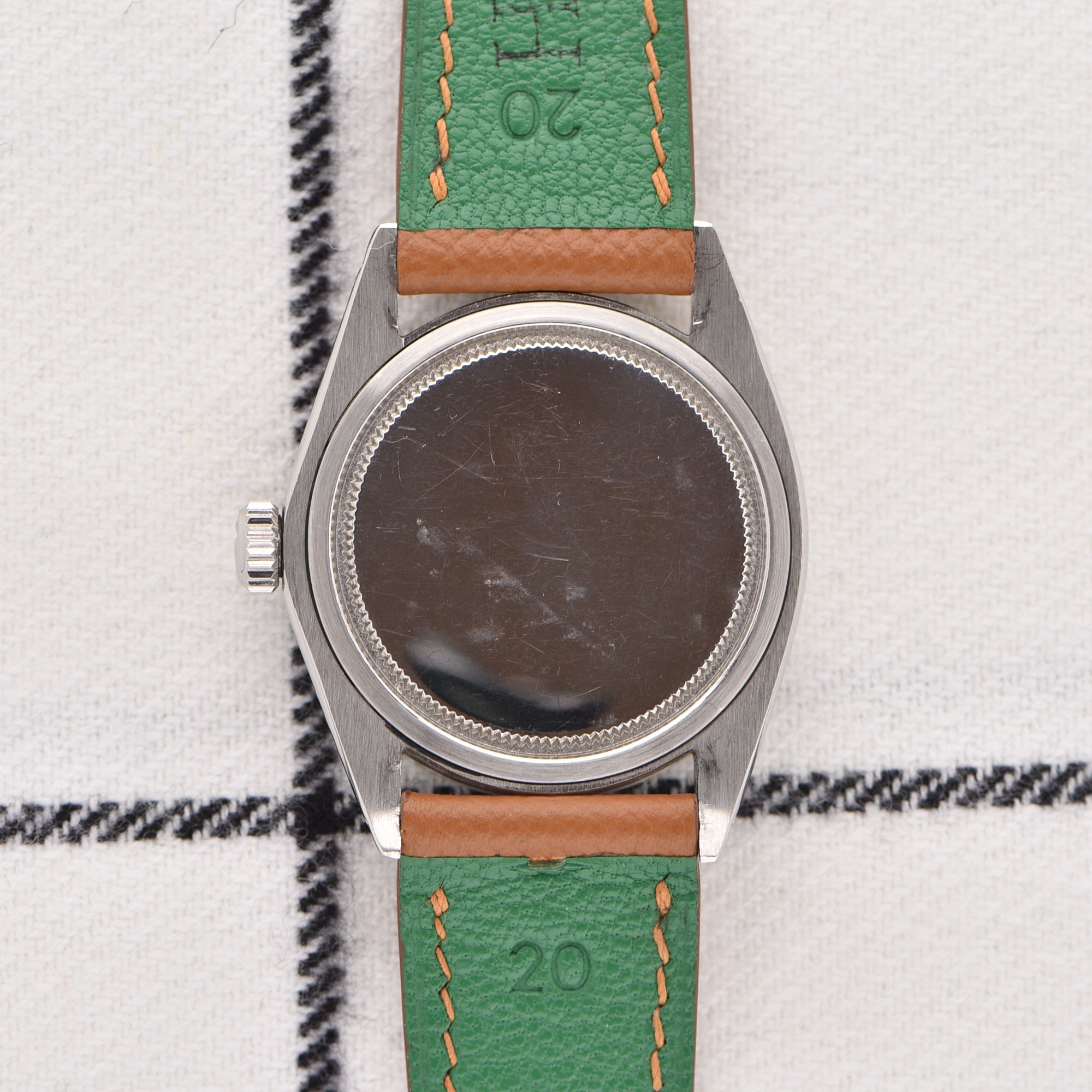
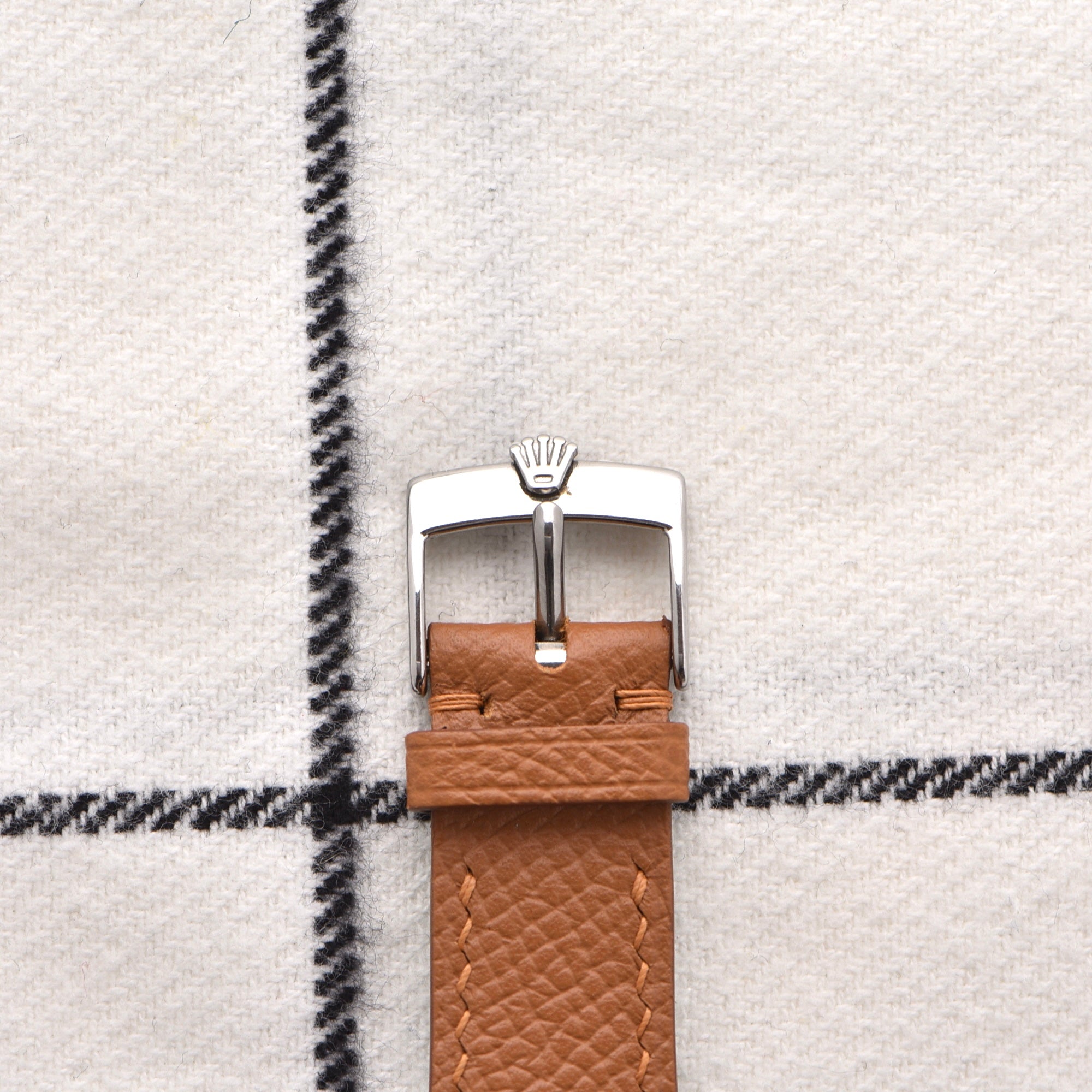
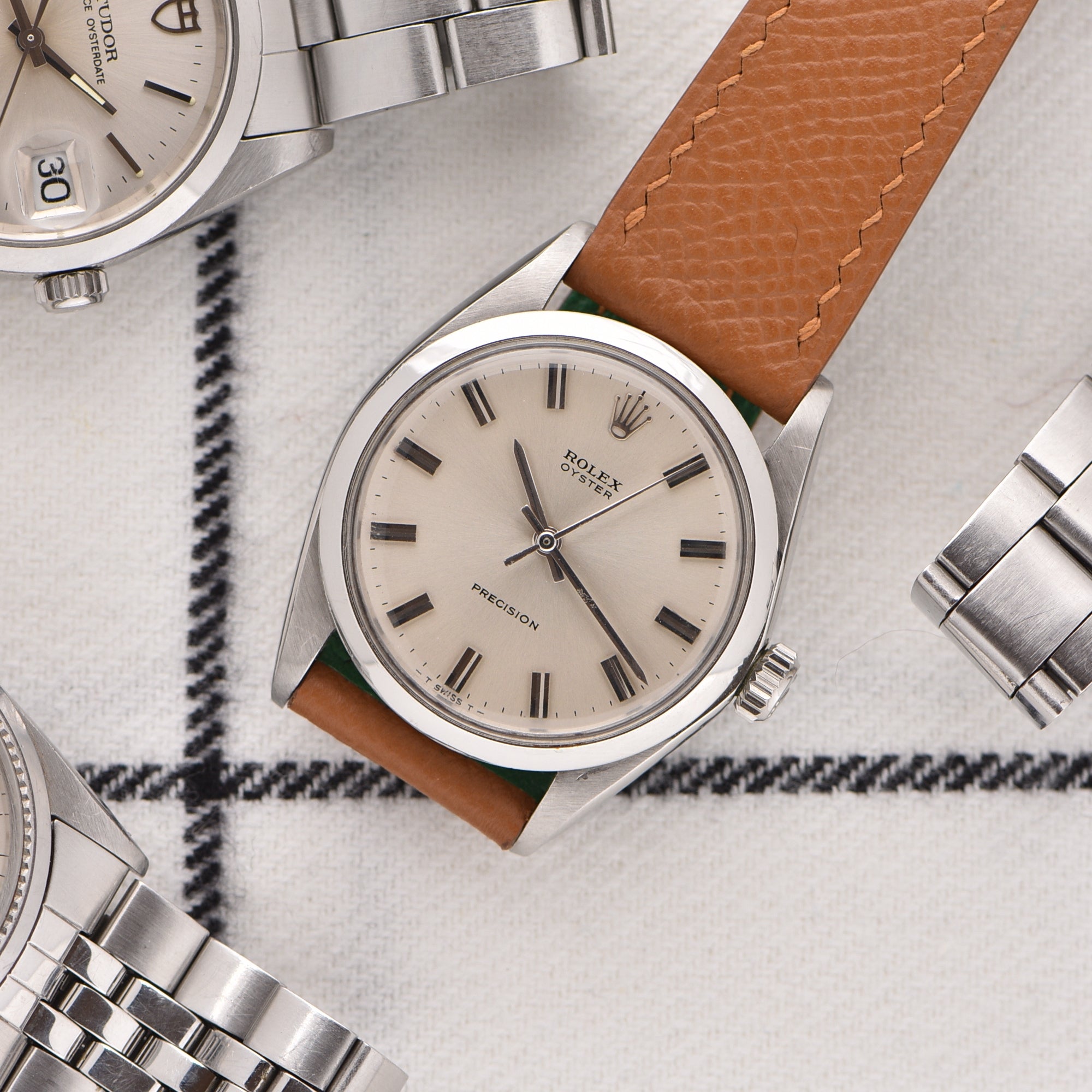

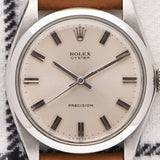
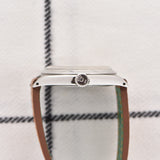
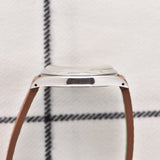
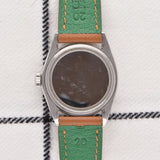
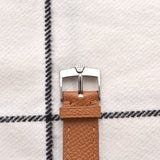
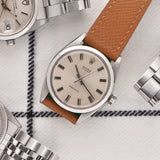
1969 Rolex Oyster Non-Lume Dial
- Reference 6426
- Watch Only, Original Buckle
- Specifications
- The Story
- The Brand
Year: 1969
Model: 6426
Case Diameter: 34mm
Lug to Lug: 41mm
Case: Stainless steel
Condition: No significant wear as seen
Dial: Great condition
Movement: Manual wind
Condition
This Oyster is in very nice condition. The dial, as shown, is very well preserved for its age. The case is just as nice with no serious dents or gashes. The watch comes with its original Rolex buckle and an aftermarket strap.
The term "Precision" on Rolex dials refers to watches that are not certified by the Contrôle Officiel Suisse des Chronomètres (COSC). These Precision labeled watches were introduced by Rolex to offer a lower priced product while protecting their main product lines. The first style was simple dress watches, often in gold or steel, first introduced in the 1940s. The second style debuted in the classic Rolex Oyster case in 1953, featuring the Oysterdate and Oyster Precision models.
The Oyster Precision was focused solely on time, while the Oysterdate featured a date function. The original Oysterdates were released with the dial reading "precision" instead of "Superlative Chronometer, Officially Certified." The Waterproof Oyster Case was considered thin for the time, opening the Rolex brand to a wider range of people.
Some of the most underrated Rolex watches bearing the name are the simple, snap-back dress watches dating from the 40s through to the 70s. Most of these watches were released in gold, with variations in case and dial design.
Precision watches are considered an investment opportunity due to their rich heritage and the demand for vintage Rolex watches. However, it is important to be cautious when pricing simpler gold dress watches, as the lack of information and comparability can make it difficult to determine the right price.
Wilsdorf & Davis was initially a watch importer, but by 1908, Wilsdorf had registered 'Rolex' as a trademark. The name was chosen after trial and error, with some believing it was taken from the phrase 'horological Excellence' or because the word sounds like a watch being wound. Wilsdorf was aware of the power of branding and began a long campaign to get the new company name on the watches he exported. The relationship between Rolex and Aegler started the same year that Wilsdorf & Davis set up the business, placing the largest order for wristwatches ever seen. Wilsdorf was attracted by Aegler's commitment to the highest quality, as their movements were extremely accurate and small. In 1910, one of Rolex's models won a First Class Chronometer Certificate from the rating office in Bienne, Switzerland, and in 1914, another piece became the first ever wristwatch to be granted a Class A Chronometer Certificate from the Kew Observatory in England, the only non-marine timepiece to ever achieve it. The firm of Wilsdorf & Davis became synonymous with a commitment to uncompromising excellence.
WWI in 1914 led to the rebranding of Wilsdorf & Davis as Rolex in 1915. The British government imposed a 33.3% tax on luxury goods, forcing Rolex to relocate to Bienne. Despite the war, the wristwatch proved its utility, as it was used by soldiers during combat and in the field. Rolex produced trench watches, using Aegler's small movements for wearability. By the end of the war, wristwatches became a utilitarian accessory for men. In the years between the wars, Rolex asserted its independence, partnering with Carl F. Bucherer to resist the Federation of Swiss Watch Manufacturers. In 1926, Rolex introduced the Oyster case, making wristwatches waterproof, dustproof, and robust. Wilsdorf capitalized on this innovation by installing Rolex Ambassadors, or 'Testimonies', with celebrities as a marketing masterstroke.
During WWII, Switzerland retained its neutrality, meaning that it was one of the few countries not forced to shut down watch manufacturing to supply the war effort. As a result, by the end of hostilities, the Swiss watch industry was way ahead of other nations. Rolex truly came of age in the 1950s by launching some of the most enduring legends in watchmaking, such as the Explorer, Submariner, GMT-Master, Day-Date, and Milgauss.
The quartz crisis of the 1970s and 80s forced the company to change tactics but ultimately repositioned itself as the purveyor of the ultimate luxury lifestyle. Today, the name Rolex is synonymous with refinement, opulence, and personal accomplishment. The Rolex brand as we know it today is the byproduct of an unrelenting drive for excellence and over a hundred years of refinement and development, all in pursuit of the brand’s singular goal of making the world’s best wristwatch.
1969 Rolex Oyster Non-Lume Dial
Authenticity Guaranteed
All our watches are carefully inspected to insure and guarantee the authenticity.
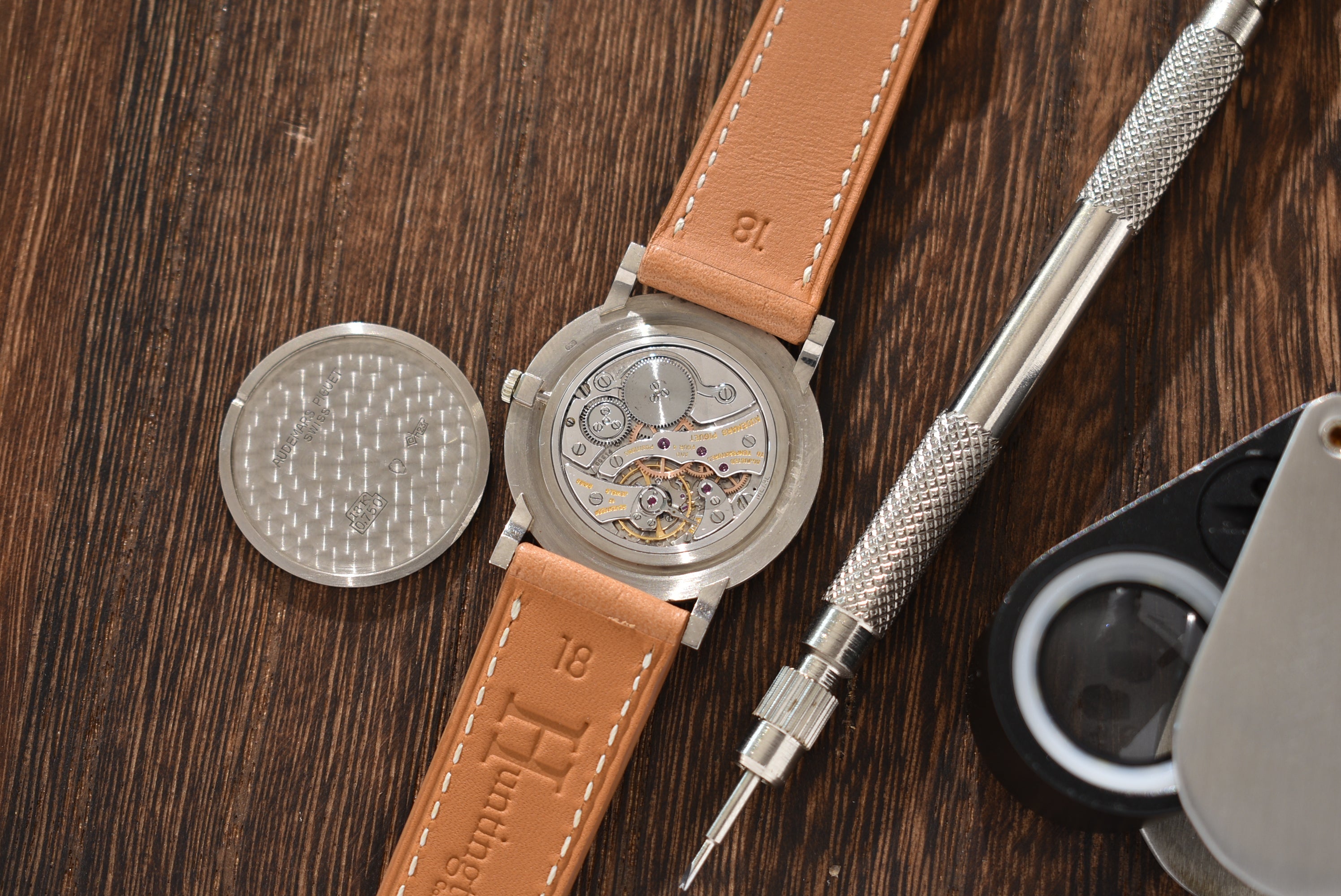
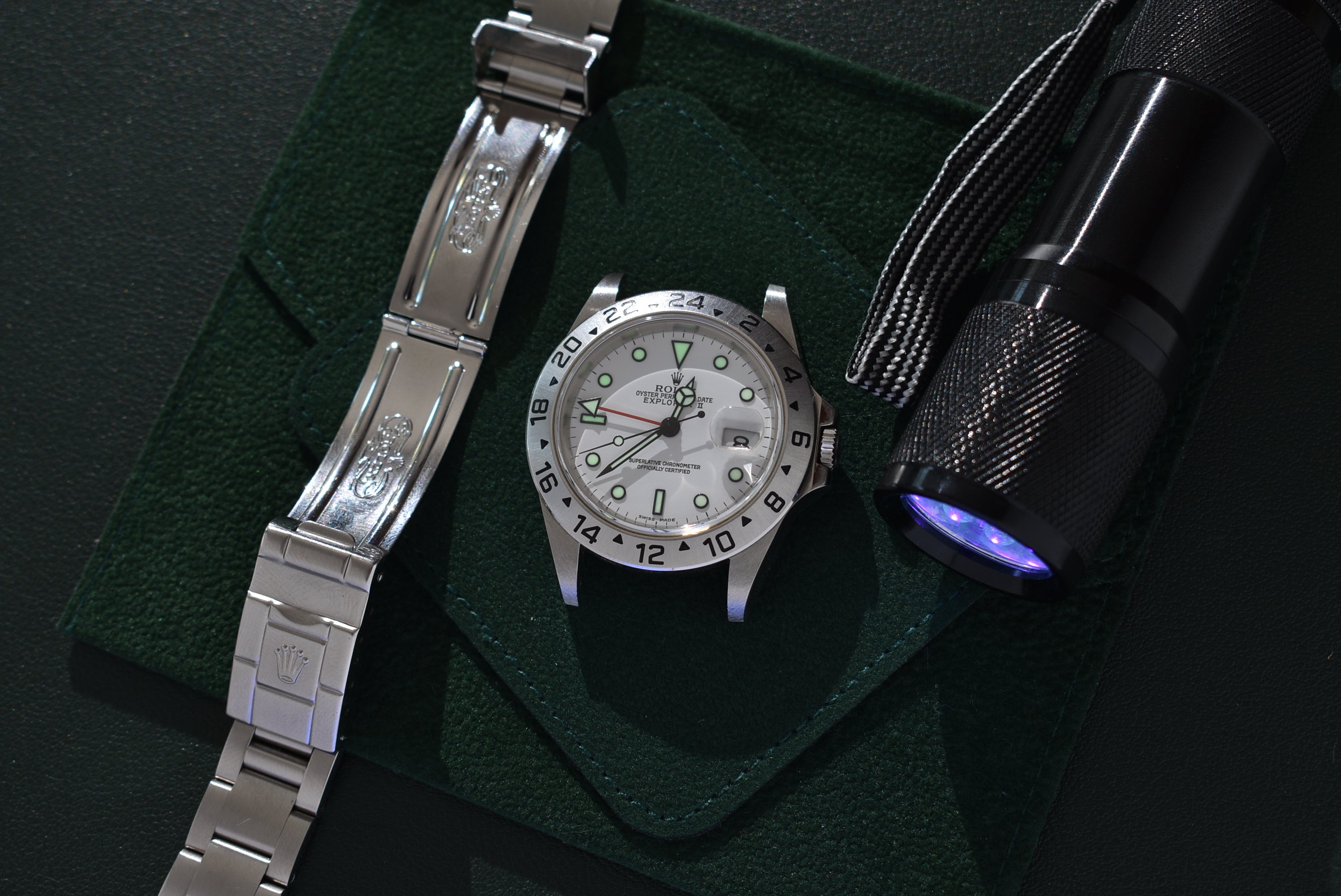
The Details
All our watches are scrutinized during inspection to make sure our descriptions are as accurate as possible.
- Related products
- Recently viewed
